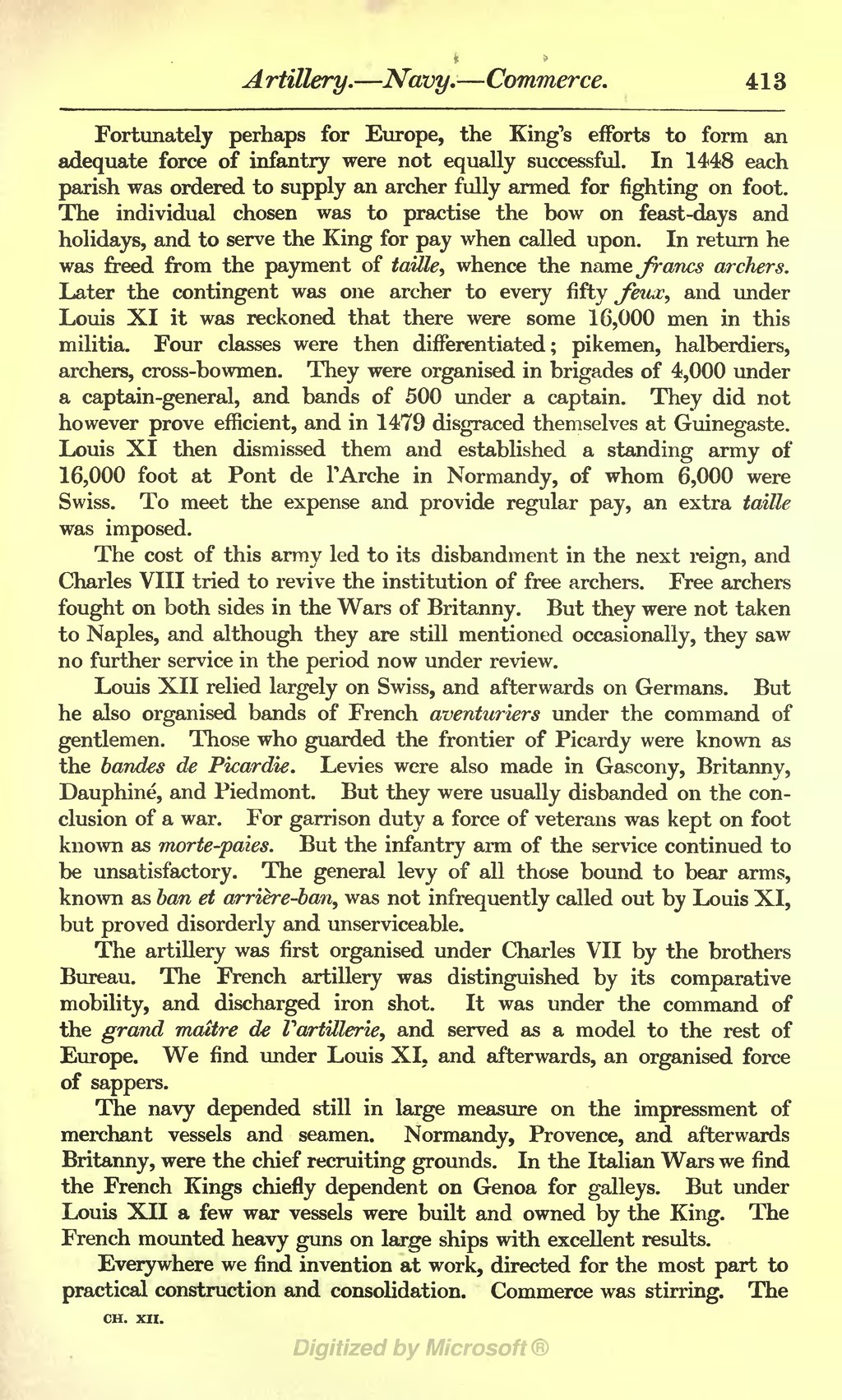Fortunately perhaps for Europe, the King's efforts to form an adequate force of infantry were not equally successful. In 1448 each parish was ordered to supply an archer fully armed for fighting on foot. The individual chosen was to practise the bow on feast-days and holidays, and to serve the King for pay when called upon. In return he was freed from the payment of tattle, whence the name francs archers. Later the contingent was one archer to every fifty feuoc, and under Louis XI it was reckoned that there were some 16,000 men in this militia. Four classes were then differentiated; pikemen, halberdiers, archers, cross-bowmen. They were organised in brigades of 4,000 under a captain-general, and bands of 500 under a captain. They did not however prove efficient, and in 1479 disgraced themselves at Guinegaste. Louis XI then dismissed them and established a standing army of 16,000 foot at Pont de TArche in Normandy, of whom 6,000 were Swiss. To meet the expense and provide regular pay, an extra tattle was imposed.
The cost of this army led to its disbandment in the next reign, and Charles VIII tried to revive the institution of free archers. Free archers fought on both sides in the Wars of Britanny. But they were not taken to Naples, and although they are still mentioned occasionally, they saw no further service in the period now under review.
Louis XII relied largely on Swiss, and afterwards on Germans. But he also organised bands of French aventuriers under the command of gentlemen. Those who guarded the frontier of Picardy were known as the bandes de Picardie. Levies were also made in Gascony, Britanny, Dauphine, and Piedmont. But they were usually disbanded on the conclusion of a war. For garrison duty a force of veterans was kept on foot known as morte-paies. But the infantry arm of the service continued to be unsatisfactory. The general levy of all those bound to bear arms, known as ban et arriere-ban, was not infrequently called out by Louis XI, but proved disorderly and unserviceable.
The artillery was first organised under Charles VII by the brothers Bureau. The French artillery was distinguished by its comparative mobility, and discharged iron shot. It was under the command of the grand maitre de rartttlerie, and served as a model to the rest of Europe. We find under Louis XI, and afterwards, an organised force of sappers.
The navy depended still in large measure on the impressment of merchant vessels and seamen. Normandy, Provence, and afterwards Britanny, were the chief recruiting grounds. In the Italian Wars we find the French Kings chiefly dependent on Genoa for galleys. But under Louis XII a few war vessels were built and owned by the King. The French mounted heavy guns on large ships with excellent results.
Everywhere we find invention at work, directed for the most part to practical construction and consolidation. Commerce was stirring. The
